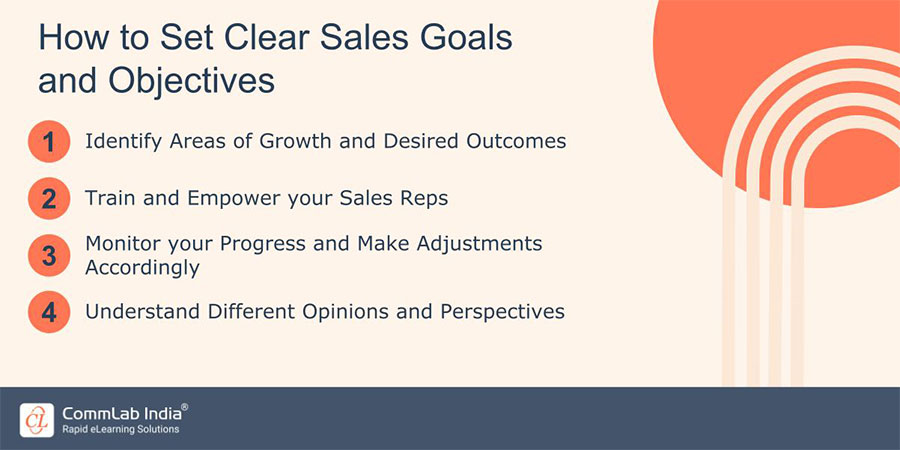5 Engaging Microlearning Formats to Empower Your Sales Force
If you want to supercharge your sales force, here are five compelling microlearning formats to integrate into your training strategy.

Sales teams are the engines that drive revenue for any organization. However, keeping them equipped with the latest product knowledge, sales techniques, and market insights can be challenging. Busy schedules, shrinking attention spans, and the overwhelming amount of information to absorb are common obstacles. This is where microlearning comes to the rescue. Microlearning delivers training in bite-sized, highly focused modules that are easy to consume and retain. It's ideal for the on-the-go salesperson, allowing for learning in short bursts whenever and wherever they can fit it in. If you want to supercharge your sales force, here are five compelling microlearning formats to integrate into your training strategy.
Trying to Empower Your Sales Force? Try Microlearning!
Here are 5 effective formats to get started -
- Short, explainer videos
- Interactive quizzes and games
- Infographics
- Scenario-based simulations
- Just-in-time FAQs
5 Engaging Microlearning Formats to Empower Your Sales Force
1. Short, Explainer Videos
Visual content is incredibly effective for learning, and microlearning videos fit seamlessly into a salesperson's day. Make sure you keep videos between 3-5 minutes for maximum engagement, focus on a single concept per video, and use animations and visuals to make content more dynamic. Here are a few benefits of using videos for learning.

Use these videos to:
Demonstrate product features: Bring products to life with demos and highlight key benefits.
Showcase successful sales techniques: Let top performers share their winning strategies through recorded scenarios or role-plays.
Provide competitor analysis: Visually break down competitor strengths and weaknesses for quick reference.
→ Register for Webinar Now: Microlearning to Slay Your Training Challenges
2. Interactive Quizzes and Games
Everyone loves a little friendly competition! Quizzes and games turn learning into an enjoyable experience. You can offer instant feedback after each question to reinforce the correct answer. Use a variety of question formats (multiple-choice, true/false, drag-and-drop). Incorporate multimedia elements like images and videos to make quizzes more engaging. Use quizzes and games to:
- Test product knowledge: Ensure salespeople have a solid grasp of product specifications, pricing, and features.
- Reinforce sales scenarios: Create quizzes based on common customer objections or sales negotiation tactics.
- Introduce gamification: Use gamification elements like points, badges, and leaderboards to motivate learners and foster healthy competition.
3. Infographics
Infographics are fantastic for presenting complex information visually. They are especially powerful for salespeople who need to understand data and trends quickly. Use a clear hierarchy of information, making the most important points stand out. Choose a visually pleasing color scheme and graphics that represent your branding. Don't overload infographics with too much text. Use infographics to:
- Summarize product specifications: Create visually appealing comparisons to highlight differences between product variations.
- Illustrate sales processes: Break down complex sales cycles into easy-to-follow visual steps.
- Display market data: Present industry trends, statistics, and customer insights in a digestible format.
4. Scenario-Based Simulations
Simulations allow salespeople to practice critical sales skills in a safe, virtual environment. You can use them to provide detailed feedback after each simulation to highlight areas for improvement. Use branching scenarios to create an adaptive experience based on the learner's choices. Make simulations as realistic as possible to maximize knowledge transfer. These simulations are perfect for:
- Handling customer objections: Let salespeople navigate challenging conversations and practice responses in a risk-free setting.
- Mastering negotiation tactics: Provide simulations for practicing price negotiation, closing techniques, and building rapport.
- Decision-making practice: Present scenarios where salespeople must make choices and experience the consequences of their decisions.
5. Just-in-Time FAQs
A comprehensive FAQ (Frequently Asked Question) resource is invaluable for sales reps. Structure it like a searchable knowledge base and use it to cover:
- Common customer questions: Help your team prepare effective responses to the most common objections and queries.
- Product information: Provide detailed product specifications, troubleshooting guides, and use cases.
- Company policies and processes: Clarify internal procedures such as order processing, pricing guidelines, and customer service protocols.
Benefits of Microlearning for Your Sales Force
Beyond these specific formats, microlearning offers several advantages that make it ideal for sales training:
- Increased Knowledge Retention: Bite-sized modules are easier to process and remember compared to lengthy training sessions.
- Improved Accessibility: Microlearning content can be accessed on smartphones, tablets, or laptops, enabling learning on the go.
- Just-in-Time Support: Sales reps can quickly access relevant information right before a customer interaction, boosting their confidence.
- Reduced Training Costs: Microlearning development is often faster and more affordable than traditional training methods.
- Enhanced Engagement: Interactive and diverse formats keep learners engaged and motivated.
Tips for Implementing Microlearning for Sales Training
To get the most out of microlearning, here are some best practices to follow:
- Set clear objectives: Define the specific skills and knowledge you want to develop in your sales team. Here are a ways to set clear goals and objectives.

- Align with sales goals: Ensure microlearning content directly supports your organization's revenue goals.
- Focus on quality over quantity: Prioritize well-designed, engaging content, even if it means creating fewer modules overall.
- Gather feedback: Collect feedback from salespeople to continuously improve and refine your microlearning content.
- Make it a habit: Encourage a culture of continuous learning by providing regular opportunities for sales reps to engage with microlearning content.
Wrapping Up!
In today's fast-paced business environment, microlearning is a powerful tool to empower your sales force. By adopting these engaging formats and following implementation best practices, you can provide your sales team with the knowledge and skills they need to succeed. This investment in continuous learning will translate into better sales performance, increased customer satisfaction, and a significant competitive advantage.





